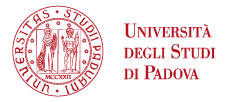
Comes Geo
 Dipartimento ICEA
Dipartimento ICEA
Professor Bernhard Schrefler
The COMES-GEO code carries out the mechanical analysis of porous materials with interconnected pores in which the flow of one or more fluid phases takes place.
The interactions between fluid and solid phases are taken into account. Geomaterials (soils, rocks, concrete), are the most common examples of such porous media. The general purpose codes, currently available in the market, do not deal with more than a single fluid phase. Therefore it is not possible to carry out realistic numerical studies of porous materials structures in partially saturated conditions as:
Seismic analysis of soil dams, where in the upper part, wide zones containing pores filled with air and water are present;
Stability analysis of soil slopes;
Simulation of the subsidence phenomena in presence of gas extraction from deep reservoir. In this case water and different gases are present in the pores. The gas reservoirs in the Northern Adriatic sea are an important example in Italy.
The COMES-GEO code, developed by the University of Padua, is able to deal with these problems and also with many others applications in the environmental geomechanics.
Due to the high frequency of earthquakes in Italy, associated with the rich historical and architectural heritage potentially affected by seismic or subsidence phenomena (Ravenna, Chioggia, Venezia), it is absolutely necessary to provide the scientific community and the public institutions (as civil guard) with a COMES-GEO-like code.
Some simplified versions of the same code are already successfully applied to problems of environmental geomechanics in Holland, United Kingdom and South Africa.
The problem unknowns are the following: temperature, capillary pressure, gas pressure and displacements. These data allow the calculation of interesting derived outputs (saturation, stress-strain fields).
To reach the solution of the problem using the considered model, four balance equations are imposed: mass of the dry air, mass of the water species (both liquid water and vapour, phase change are considered) and the linear momentum of the multiphase medium. They are completed by an appropriate set of constitutive and state equations, as well as some thermodynamic relationships.
COMES-GEO allows any finite element analysis in plane strain and axialsymmetric conditions, using four nodes bilinear elements or serendipity eight nodes elements or Lagrange nine nodes elements.
COMES-GEO runs on the major scientific platform (IBM- Power 5,6,7 servers with IBM AIX Unix or Linux, INTEL-based servers and workstations with Linux or Windows, etc.). The source is written in FORTRAN 90.
The code can be used in two different manners: batch and interactive mode (USING GID).
The code is developed along the lines of the theory outlined in "The Finite Element Method in the Static and Dynamic Deformation and Consolidation of Porous Media", by R.W. Lewis and B.A. Schrefler, Wiley, 1998.
For further information contact S.Secchi.





